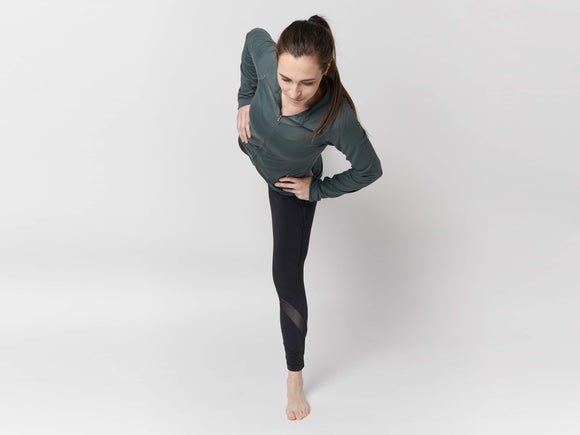The Best Warm-Ups for Runners
By Alexandra Andersson, D.C.

The Purpose of an Effective Warm-Up
The overall purpose of warming up before you run is to decrease the risk of injury. In order to successfully prevent any damage, it is important to first understand how running injuries occur. There are many ways to get injured, but the equation of injury is always the same; the load that went into the tissue was greater than the load-bearing capacity of the tissue. This caused the tissue to yield, resulting in injury.
Some runners may need a more extensive assessment of which tissues need addressing in order to be able to properly handle the load of running. That assessment should be done by a professional. But for many runners, one of the most effective ways to mitigate the risk of injury is to prepare our tissues to handle the load that we are about place upon them.
Thus, the best warm-up is the one that actively warms up the tissues through the specific demands and motions of our sport. The easiest way to do this is through our joints as this will direct the brain's attention to that area.
Running-Specific Issues to Address
With every step, you must absorb three to four times the force of your body weight. At push off, you release six to seven times your body weight. For a 70kg runner, that means you're absorbing up to 280kg of force with each step! If you don't absorb or release this shock effectively, injuries like stress fractures, Achilles tendonitis, shin splints, and hamstring strains may eventually occur.
Running also involves a great deal of balance. When we run, we spend 100% of our time on just one leg, therefore effective balance is crucial to running well. If you cannot balance on one leg, then when you go out to run, you're not really running — you're managing the art of not falling! When performed over and over, this puts extreme stress on the tissues and will likely result in an injury.

The Goal of an Effective Running Warm-Up
An effective warm-up will prepare our bodies to run by focusing on opening up the communication pathways between the brain and the rest of the body. This is done by moving our joints, activating the surrounding soft tissues, and incorporating balance exercises. We will prime the body to not just absorb the force of each step but to release more than we take in.
A very general yet effective running warm-up is outlined below. If your running focus is more specific (e.g. adventure runs or sprinting), these exercises will still have benefit, however there are other things you may want to do to prepare your body for the task ahead.
The Runner's Warm-Up
Single Leg Runner Stance: Tripod
- Begin with the three points of contact of your foot on the floor.
- Create a tripod by evenly distributing your weight across these three points.
- Shift weight onto one leg.
- Drive the opposite knee up like you’re doing a high knees drill and hold.
- Extend the hip back as you would in your running gait and hold.
- For a more advanced option, try varying your speed.
- Repeat on the other side.
Heel Raise with a Scoop
- Place a small ball behind and below your ankles, at your heels.
- Face your feet straight ahead
- Start to lean forward and root the tips of your toes into the ground.
- Take the weight off your heels and scoop them together to activate.
- On an exhale, lift your heels up as high as you can.
- Ensure the entire forefoot is in contact with the ground.
- Continue pushing off your toes and driving the heels together.
- Slowly lower back down.
- Feel the rotation that is happening at the tibia all the way into the hips.
Hip Airplanes
- Begin with your left foot on the ground and shift your weight onto that leg.
- Lean forward from hips as you lengthen your right leg straight behind you.
- Point your right toes behind you while squeezing the glute.
- Keep a sensation of strength through the entire length of your body.
- Once you approach tabletop position, hold.
- In this position, explore rotational movements.
- Lift the right hip and right side of the torso to the sky.
- Return to tabletop position before lowering your leg back to standing position.
- Repeat on the other side.
Thoracic Spine Rotation
- Begin in a standing position.
- Start making nice, easy rotations of the thoracic spine left and right.
- Keep hips facing straight ahead.
- Rotate shoulders to face one side and then the other.
- Try to recognise whether one direction is more difficult.
- See if you can get at least 50 degrees of rotation in each direction.